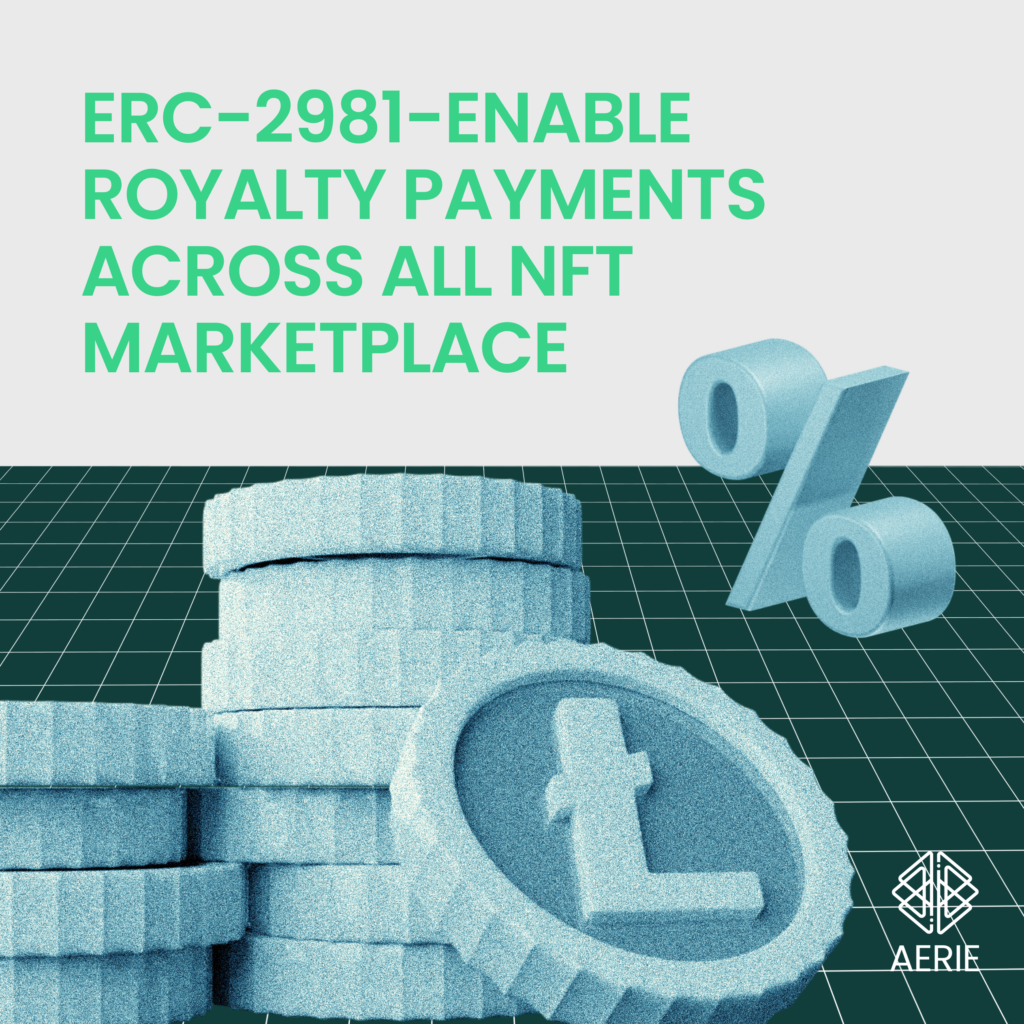
In the dynamic world of Non-Fungible Tokens (NFTs), artists often grapple with the challenge of receiving fair compensation for their digital creations. Enter ERC-2981, a groundbreaking standard that seeks to streamline royalty payments within the NFT ecosystem. In this article, we’ll delve into the key aspects of ERC-2981, exploring how it addresses challenges faced by artists and creators.
The Challenge of Royalty Payments
Consider a typical conversation between an artist and a marketplace:
Artist: “Do you support royalty payments on your platform?”
Marketplace: “Yes, we have royalty payments, but if your NFT is sold on another marketplace, then we cannot enforce this payment.”
Artist: “What about other marketplaces that support royalties, don’t you share my royalty information to make this work?”
Marketplace: “No, we do not share royalty information.”
This exchange highlights a common hurdle in the NFT space — the lack of a standardized approach to royalty payments that transcends different platforms.
ERC-2981: A Solution to Royalty Woes
ERC-2981 proposes a solution by introducing a standard method for specifying royalty payment information. Compliant with ERC-721 and ERC-1155 contracts, this Ethereum Improvement Proposal (EIP) allows marketplaces to implement a consistent royalty framework. Let’s break down the key features and considerations outlined in ERC-2981:
1. Standardizing Royalty Information
Marketplaces that support ERC-2981 are encouraged to implement a method for transferring royalties to the designated recipient. The exact details of fund transfer and notification are left for future EIPs to specify.
2. Currency Consistency
A crucial aspect of ERC-2981 is that marketplaces must pay royalties in the same unit of exchange as the sale price. Whether the sale is in ETH, USDC, or any other currency, the royalty payment must align with the sale currency.
3. Percentage-Based Royalties
Implementers of ERC-2981 must calculate a percentage of the sale price when determining the royalty amount. This ensures a fair and standardized approach to compensating artists. The percentage value should remain independent of the sale price, providing consistency across different transaction amounts.
4. Adaptive Percentage Calculation
While the standard advocates for a percentage-based model, implementers have room for creativity in adjusting the percentage value based on predictable variables. For instance, the percentage could vary over time, tied to the number of NFT transfers or unique token IDs.
5. Universality in Payments
ERC-2981 introduces a universal approach to royalty payments, applicable across on-chain and off-chain sales, as well as various currencies or tokens. Marketplaces supporting this standard must not send zero-value transactions for royalties.
6. Voluntary Royalty Payments
Acknowledging the complexity of distinguishing sales from non-sale transfers, ERC-2981 opts for a voluntary approach. NFT marketplaces are encouraged to implement this standard voluntarily, with buyers considering royalty payments as a factor in their purchasing decisions.
7. Backwards Compatibility
One notable feature is ERC-2981’s compatibility with existing ERC-721 and ERC-1155 standards. This ensures a smooth transition for platforms already adhering to these standards.
Looking Ahead
ERC-2981 doesn’t attempt to prescribe every detail of royalty payment logic. Instead, it serves as a minimal, gas-efficient foundation for innovation in NFT royalty payments. Future EIPs are expected to provide more granular details on payment transfer mechanisms and notifications.
The Challenge
However, despite its promising features, ERC-2981 does not come without challenges and limitations. One significant hurdle is the voluntary nature of royalty payments. As the standard relies on marketplaces voluntarily adopting it, there’s a risk that not all platforms will integrate ERC-2981, leaving gaps in the implementation of standardized royalty practices.
Conclusion
In the evolving landscape of NFTs, ERC-2981 emerges as a beacon of hope for artists seeking fair compensation. By establishing a standard for royalty payments, it brings a level of consistency and universality to the NFT marketplace.
While it doesn’t impose rigid rules, ERC-2981 sets the stage for voluntary adoption, encouraging marketplaces to prioritize the financial well-being of the creators who fuel the vibrant world of digital art. As the NFT space continues to mature, ERC-2981 stands as a testament to the community’s commitment to fair compensation and sustainable growth.